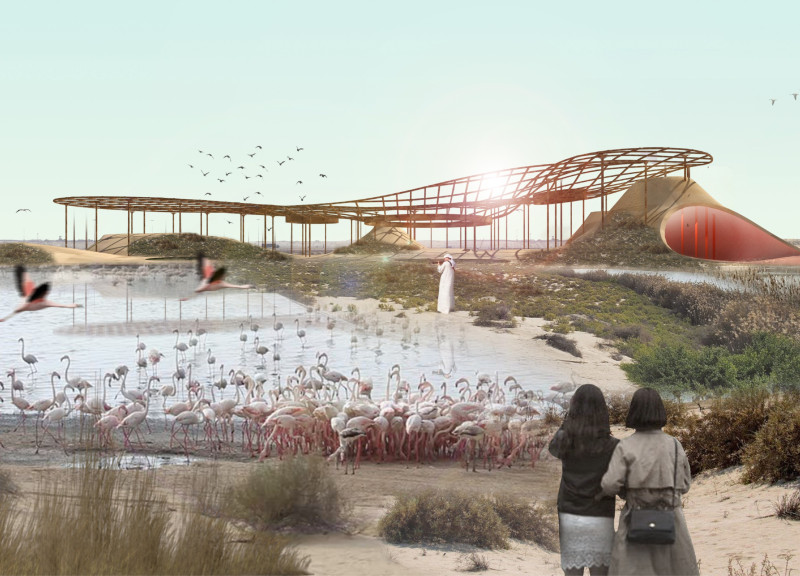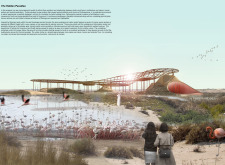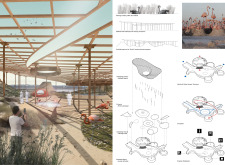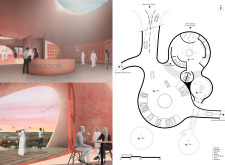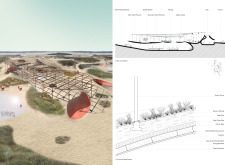5 key facts about this project
The Hidden Paradise is an architectural design that emphasizes the relationship between constructed spaces and the environment. Located in a wetland reserve, it seeks to educate visitors about local wildlife and the effects of human activity on nature. The concept revolves around a balance between architecture and landscape, focusing on user experience and ecological responsibility.
Form and Structure
The visitor center features a design influenced by flamingo nests, with partially underground elements that blend into the surrounding reed landscape. The building consists of circular cones that vary in height, which adds depth and variety to the space. A wavy canopy supported by slender columns enhances the overall appearance, creating an inviting shelter that mirrors the natural contours of the landscape.
Visitor Experience
Visitors start their journey in an underground information center, which guides them to a display area and training center. The experience culminates in a café that overlooks the wetland reserve. This gradual movement not only helps organize the functions of the building but also deepens the connection between visitors and their natural surroundings, fostering appreciation for the ecosystem.
Ecological Integration
The design prioritizes visibility of flamingo behaviors while ensuring that human activities do not disturb their natural habits. The placement of paths and viewing areas encourages coexistence between people and wildlife, allowing for meaningful observation. The landscape under the canopy provides both shade and habitat for local species, reinforcing the project’s aim to support ecological health.
The wavy form of the canopy serves as a prominent feature, providing shelter while creating engaging spaces for visitors. It captures the rhythm of the landscape, inviting people to pause and connect with nature in a thoughtful and unique environment.


